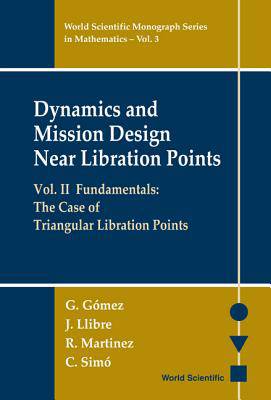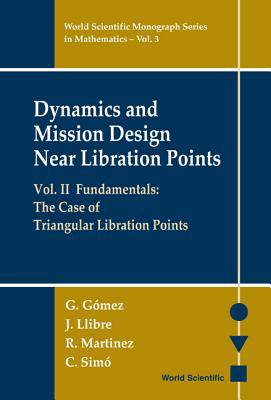
- Retrait gratuit dans votre magasin Club
- 7.000.000 titres dans notre catalogue
- Payer en toute sécurité
- Toujours un magasin près de chez vous
- Retrait gratuit dans votre magasin Club
- 7.000.000 titres dans notre catalogue
- Payer en toute sécurité
- Toujours un magasin près de chez vous
Dynamics and Mission Design Near Libration Points - Vol II: Fundamentals: The Case of Triangular Libration Points
Gerard Gomez, Jaume Llibre, R Martinez, Carles Simo
115,45 €
+ 230 points
Description
It is well known that the restricted three-body problem has triangular equilibrium points. These points are linearly stable for values of the mass parameter, μ, below Routh's critical value, μ1. It is also known that in the spatial case they are nonlinearly stable, not for all the initial conditions in a neighborhood of the equilibrium points L4, L5 but for a set of relatively large measures. This follows from the celebrated Kolmogorov-Arnold-Moser theorem. In fact there are neighborhoods of computable size for which one obtains "practical stability" in the sense that the massless particle remains close to the equilibrium point for a big time interval (some millions of years, for example).According to the literature, what has been done in the problem follows two approaches: (a) numerical simulations of more or less accurate models of the real solar system; (b) study of periodic or quasi-periodic orbits of some much simpler problem.The concrete questions that are studied in this volume are: (a) Is there some orbit of the real solar system which looks like the periodic orbits of the second approach? (That is, are there orbits performing revolutions around L4 covering eventually a thick strip? Furthermore, it would be good if those orbits turn out to be quasi-periodic. However, there is no guarantee that such orbits exist or will be quasi-periodic). (b) If the orbit of (a) exists and two particles (spacecraft) are put close to it, how do the mutual distance and orientation change with time?As a final conclusion of the work, there is evidence that orbits moving in a somewhat big annulus around L4 and L5 exist, that these orbits have small components out of the plane of the Earth-Moon system, and that they are at most mildly unstable.
Spécifications
Parties prenantes
- Auteur(s) :
- Editeur:
Contenu
- Nombre de pages :
- 160
- Langue:
- Anglais
- Collection :
- Tome:
- n° 3
Caractéristiques
- EAN:
- 9789810242749
- Date de parution :
- 12-02-01
- Format:
- Livre relié
- Format numérique:
- Genaaid







